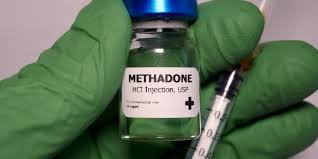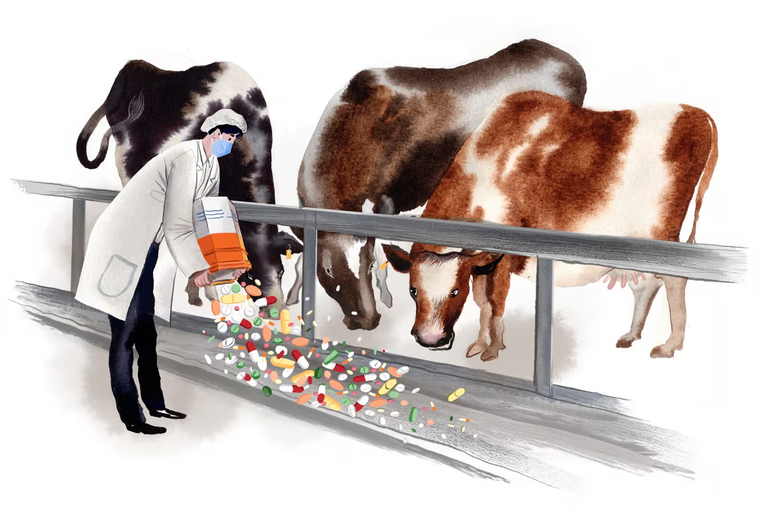Introduction

Methadone, a synthetic opioid used in the treatment of opioid dependence, has become a cornerstone of Australia’s opioid substitution therapy (OST) programs. However, despite its role in harm reduction, there is growing skepticism about whether the methadone treatment system is more of a lucrative "cash cow" for private providers and pharmaceutical companies than a solution to opioid addiction. Evidence from coroner's reports, government spending, and data on incarceration rates suggest that methadone treatment may serve certain financial interests, raising questions about its long-term efficacy.
Methadone is a medicine used to treat heroin dependence. It is taken daily to relieve heroin withdrawal symptoms and reduce cravings for heroin. The aim of methadone maintenance treatment is to help you reduce your illicit drug use.
Government Spending and Program Costs
The Australian government has allocated substantial funds toward methadone and opioid substitution programs, which have grown over the years as the opioid crisis has worsened. In one year, the government earmarked $268 million to address drug and alcohol issues, with a portion of that directed toward opioid substitution therapy(
RACGP
). While these funds go toward helping those with addiction, a significant share of the cost is shouldered by individuals receiving treatment. Depending on where methadone is dispensed (clinics or pharmacies), additional administration fees can be levied. This structure potentially allows pharmacies and clinics to profit from dispensing a government-subsidized medication.
Methadone as a Lucrative Opportunity for Pharmacies

Methadone is primarily dispensed through pharmacies and clinics that are licensed to administer the treatment. While the federal government subsidizes the cost of methadone itself, pharmacies are allowed to charge additional fees for supervision, administration, and dispensing. These fees, in some instances, amount to $40 or more per week per patient(RACGP). Given that methadone treatment is often long-term, this presents a steady income stream for pharmacies participating in the program. The combination of government subsidies and private fees creates a financially rewarding model for these businesses.
Companies Behind Methadone Production
Pharmaceutical companies involved in methadone production also stand to benefit. In Australia, methadone is produced by a number of pharmaceutical firms, including Aspen Pharmacare and Link Pharmaceuticals, which supply the drug to clinics and pharmacies. While revenue specifics for methadone alone are not always disclosed, these companies benefit from stable demand due to the nature of opioid dependency treatment, which often lasts for years.
Globally, methadone is a billion-dollar industry, with significant profits being made in regions facing opioid crises. Methadone's demand ensures steady revenues for pharmaceutical manufacturers, as patients are often on the drug for extended periods.
The Numbers: Who’s on Methadone in Australia?
The number of Australians enrolled in methadone programs has steadily increased in recent years. According to recent figures, there are approximately 50,000 people on opioid substitution programs in Australia, with methadone being the most common treatment. A significant proportion of these individuals are also incarcerated, where methadone is used as a means to manage opioid dependence in prisons.
Many reports from Australian coroners have noted the prevalence of methadone among those who have died of opioid-related causes, suggesting that methadone alone is not always effective in resolving addiction. In some cases, individuals have remained on methadone for years, without transitioning off opioids entirely. These cases have raised questions about the efficacy of long-term methadone treatment as a solution to addiction.
Methadone in the Prison System
Incarceration rates for those enrolled in methadone programs also highlight potential issues. A large number of people receiving methadone treatment are involved in the criminal justice system, either as a result of drug-related crimes or ongoing addiction issues. The high rates of methadone use among prisoners raise concerns about whether the program is a path to rehabilitation or simply a way to manage addiction in a controlled environment. Methadone’s presence in prisons also represents a consistent source of revenue for the pharmaceutical and healthcare sectors administering the drug.
Political Influence and Regulation
Pharmacies dispensing methadone are part of a tightly regulated system. However, despite the regulatory framework, the Pharmacy Guild of Australia—a powerful lobby group—has been able to influence policy in ways that benefit pharmacists financially. Critics argue that methadone, as a subsidized drug, allows for significant profits, especially since pharmacies can charge extra for services that are not fully regulated.
There have been ongoing discussions about whether the current structure of methadone programs needs reform. Some advocate for full subsidies to eliminate the financial burden on patients, but this could reduce the lucrative nature of the program for private providers.
Conclusion
While methadone serves an important role in Australia’s opioid crisis by helping people manage addiction, it’s hard to overlook the financial benefits reaped by those involved in its distribution and administration. With government spending running into the hundreds of millions and tens of thousands of individuals enrolled in the program, methadone has become a consistent source of revenue for pharmaceutical companies, pharmacies, and clinics. Moreover, its continued use in the prison system adds to concerns about whether the program is helping people overcome addiction or simply maintaining a profitable treatment cycle.
Methadone, despite its role in harm reduction, may indeed be viewed by some as a “cash cow” within the broader healthcare and pharmaceutical sectors. For those skeptical of its effectiveness and long-term impact, the financial interests at play raise critical questions about the motivations behind its widespread use.
Further reading
https://www1.racgp.org.au/newsgp/professional/opioid-treatment-receives-377m-funding-increase
https://skeptics.stackexchange.com/questions/861/methadone-remedy-that-cures-or-drug-that-kills



